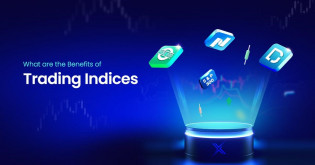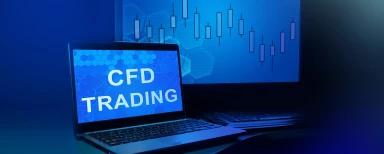-
Indices also referred to as an index, are a collection of stocks and financial instruments that are used to track the growth of an industry or a sector. This allows traders to determine how the industry or that particular sector is performing.
For example, S&P 500 (USA), FTSE 100 (UK), and DAX 30 (Germany) are some of the major indices across the globe. These are the mentioned countries’ indexes, which include the largest companies there. An index tracks the publicly traded stocks collectively and with this traders can understand how the markets work.
CFD Indices
By investing CFD indices, you can speculate on the price movements of the indices i.e., rising or falling prices, without actually owning the underlying assets. Indices markets are highly liquid and you can make high potential profits with the right opportunities.
- Go long or short
While trading indices with CFD, you get to go long or short. Which means, you can the index buy (go long) when you think the price will rise and you sell the index (go short) when you think the price will fall. Your profits will depend on the accuracy of your speculations or predictions as well as the overall size of the index’s market movement.
- Leverage Trading
With CFDs, you can trade with leverage. Which means you can borrow the funds from the broker and open bigger positions even with the small initial deposit. You can maintain the margin and open a much larger position.
Please note that with leverage trading, the profit or loss gets calculated on the entire position size and not only the initial margin that’s used to open the position.
- With CFDs indices, you have a collection of multiple stocks which can protect you from losses in your portfolio. If there is a market downtrend, the index’s value increases via the short position which offsets the losses. If the stocks’ values increase, there’s an offset on the profits.
Indices Trading Strategies
- The 3-day strategy – Going long on an Index.
A market pullback usually lasts for 3 days. And you can setup your trading rules to buy a stock index. Wait for 3 or 2 consecutive daily red candles. Then on the 4th day, you wait for a pullback. If on the 4th day or 3rd day, it breaks below the low of the previous day, then wait until the markets regain its strength above the opening price of the 4th / 3rd day.
- Sell the Index – Going short on an Index
Seling an index is different than buying it. You can sell an index when there is weakness in the stock market. It is safer to sell the stocks when you see that the market is starting to come down and there is a downward trend on the price structure – which means lower lows and lower highs.
You can trade stock indices after big announcements are made such as mergers, any new trade deals, etc. You can also keep track of the trading calendar to anticipate your next break.
- Trade on the news – Trade based on news
News has a great influence on the financial markets and can lead to price movements. When there is big news like FED meetings, NFP reports, etc., you can wait for the news to settle and trade on the aftermath of the index’s price reaction.
Trade CFD Indices Online
- Create an account and log-in
- Select the index or indices that you want to trade
- Decide whether you want to go long or short
- Set the stops & limits
- Open a position and monitor the trade
Register with Capitalxtend and start trading indices on MT4, the world’s fastest trading platform.
Open a trading account and trade with the lowest spreads, fast execution, and superior trading tools.
- Go long or short




